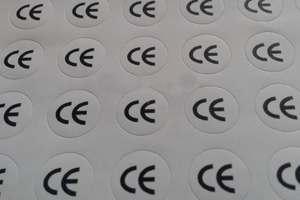In the New Approach Directives, products are divided into two groups: low-risk products and high-risk products. The group to which a product belongs is described in the relevant directive. In case of doubt, it can be determined by testing and inspection institutions or laboratories which group the product belongs to.
Products to be CE marked If it does not pose a risk to human health, life and property safety and environmental conditions, there is a low risk, and manufacturers will conduct conformity assessment studies themselves. They determine whether their products comply with the relevant directive and, if appropriate, issue a declaration of conformity and affix the CE label to the product themselves. However, manufacturers can apply to a testing and inspection organization or a laboratory for their low-risk products. They can also get advice on this subject.
However, if the products contain the risks listed above, then it is absolutely necessary to apply to a notified body operating in the member states of the European Union but having branches or representative offices in other countries. This notified body may be a certification body or an inspection or testing facility or a laboratory. The test and inspection studies to be performed by these organizations determine the conformity of the product with the relevant directives. In other words, for high risk products, the report of a competent authority shall be taken as basis.
These organizations obtain the authority from national or international accreditation bodies. These organizations prepare a report showing the conformity of the products to the required criteria and basic requirements according to the inspection and test results. As a result of this report the manufacturer declaration of conformity by regulating the product CE marking It can attach.
The most important point here is to ensure that the CE marking is manufactured in accordance with the relevant directives and national legal regulations for the insertion of products. There is no major problem here, as the necessary tests and inspection procedures for risky products are carried out by authorized bodies. However, as responsibility for low-risk products lies with the manufacturing companies, this is the most problematic issue. If manufacturers are not sure about their products, they should in no way put CE marking on these products and offer them to the European Union markets. Otherwise, the products will be collected from the market and there is a risk of legal sanctions. CE labeling imposes heavy responsibilities on manufacturers. The consumer has the right to claim compensation up to € 70 million in case of damage to this product.
Briefly put into products CE label creates a serious competitive advantage and strengthens the image of the company.
The TÜRCERT certification organization not only carries out certification activities, but also provides technical services such as various inspection and testing activities. Therefore, if you want to get more information about the CE marking and how to put the CE marking, the experienced managers and employees of the TÜRCERT certification body will always be with you.

